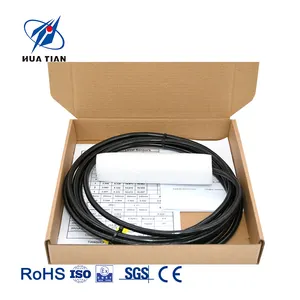Liquid Sensor Technology Overview
Liquid sensors are integral components in various industrial and residential applications, designed to monitor and measure the presence or level of liquids. These devices play a crucial role in ensuring the efficiency, safety, and conservation of resources in systems ranging from simple home water tanks to complex industrial processes.
Types and Applications of Liquid Sensors
There are several types of liquid sensors, each suited for specific applications. Water leakage sensors are commonly used in residential and commercial buildings to detect unwanted water presence and prevent damage. Water flow meters and ultrasonic water flow meters are utilized in industrial settings to measure the rate of water flow through a system, which is essential for process control and resource management. In agricultural and environmental monitoring, water level probes and water tank level indicators are employed to maintain optimal water levels and prevent overflows.
Features and Materials of Liquid Sensors
Liquid sensors are crafted from a variety of materials tailored to the environment they will encounter. For instance, water detection sensors are often made from corrosion-resistant materials to ensure longevity and reliability. The technology behind these sensors can range from simple mechanical floats to advanced electronic devices that use ultrasonic or magnetic principles, such as magnetic water flow meters, to detect and measure liquid levels.
Advantages of Modern Liquid Sensing Solutions
Modern liquid sensors, such as level water sensors and sensor level water devices, offer numerous advantages. They provide accurate and real-time data, which is essential for process optimization and preventing emergencies. Devices like the float switch for water tank or water storage tank float switch are simple yet effective tools for controlling water levels and ensuring the proper functioning of pumping systems.
Innovations in Liquid Sensing
Innovation in liquid sensing technology has led to the development of smart sensors that can be integrated into automated systems. For example, the water level sensor Arduino is a popular choice for DIY enthusiasts and professionals alike, due to its versatility and ease of integration into custom projects. Similarly, water tank water level sensors are now more sophisticated, providing wireless monitoring capabilities that enhance user convenience and system responsiveness.
Choosing the Right Liquid Sensor
Selecting the appropriate liquid sensor requires an understanding of the specific needs of the application. Factors to consider include the type of liquid being monitored, the required sensitivity and accuracy, the environmental conditions, and the desired output signal. Whether it's for a water tank level sensor or a complex industrial monitoring system, it's crucial to choose a sensor that meets the application's demands while ensuring reliability and efficiency.





























 浙公网安备 33010002000092号
浙公网安备 33010002000092号 浙B2-20120091-4
浙B2-20120091-4